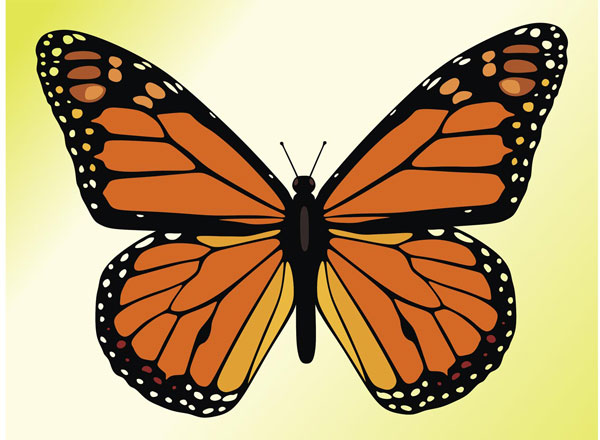
By Linda Wiggen Kraft
Butterflies and moths give flight to beauty and mesmerize us with their movement through the garden. The winged patterns of colors from dark to light and bright to subtle take our breath away. Butterflies and moths also speak to our souls in a deeper way with the transfiguration of caterpillar to winged amazement.
To see and know about the total metamorphosis of caterpillar, to chrysalis, to flying wings stuns us with the majesty and magic of nature. The scientific name of the cells within the chrysalis that transform a caterpillar to a butterfly or moth are called imaginal cells. It’s the imagination of nature that brings butterflies and moths into form. To see such a dramatic transformation of life inspires our imagination and points to the possibility of real and imaginal changes in our own life.
What better way to be part of this miracle and inspiration than to create a sanctuary for caterpillars, butterflies, moths, insects and all life that are part of the garden’s wholeness. A garden for the winged creatures invites in and provides shelter, food and habitat for all stages of life.
A garden for butterflies, moths and other garden inhabitants includes trees, shrubs, perennials and annuals. The most important specifics of this kind of garden are the host or larval plants. These are the specific plants butterflies and moths need for the caterpillars to eat and survive. These native plants and insects have co-evolved over time. If a particular plant that has been part of this evolutionary dance is not around, the caterpillars will not survive. An example is milkweed (asclepias) plant that is the only plant Monarch caterpillars can eat. If the plant is not there for the caterpillars, there will be no Monarch butterflies.
The plants that support the most butterfly and moth life are oak trees. Some oaks are larval hosts for over 500 species of butterflies and moths. The caterpillars become butterflies and moths, and are also protein food that birds need to feed their young. Other native trees are also host plants. Dogwoods (cornus florida) are hosts for the small blue Spring Azure butterfly. Hackberry trees (celtis occidentalis) host six different butterflies: Mourning Cloak, Question Mark, Hackberry Emperor, Comma, Snout, and Tawny Emperor.
Shrubs, perennials and annuals can be host plants. Arrowwood viburnum (viburnum dentatum) is the host plant for Hummingbird moths, the size of hummingbirds. The host plants for Swallowtail butterflies are dill, parsley and fennel.
In addition to host plants, adult butterflies and moths need flower nectar for food. They help pollinate flowers as they feed. Flowers with open petals and easy landing spots are the best. Some favorites are purple coneflower (echinacea), zinnias, New England asters, blazing stars (liatris) and goldenrods. Make sure the garden has blossoms from early spring to late fall.
The North American Butterfly Association (www.naba.org) has information and certifies butterfly gardens. They must have at least three kinds of host plants and three kinds of nectar plants. Pesticides should not be used in these gardens.
Butterflies and moths will take up residency in your garden if you grow plants for the caterpillars and food for the adults. Help these winged beauties bring the beauty and magic of nature’s transformative powers into the world by creating a butterfly and moth garden.
Linda Wiggen Kraft is a landscape designer who creates holistic and organic gardens. She is also a mandala artist and workshop leader. Please visit her blog: www.CreativityForTheSoul.com/blog or her website: www.CreativityForTheSoul.com.
Call her at 314 504-4266.


